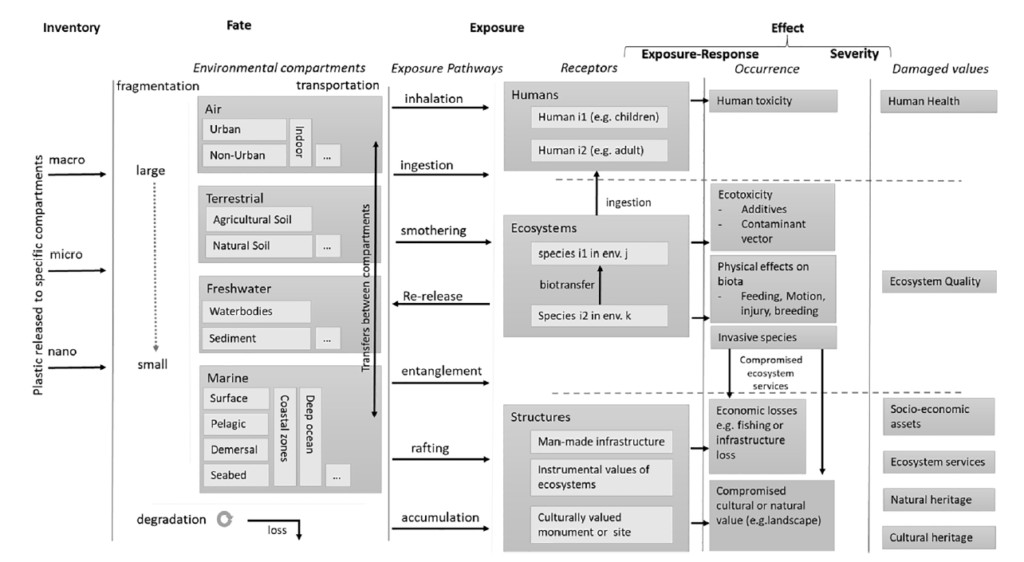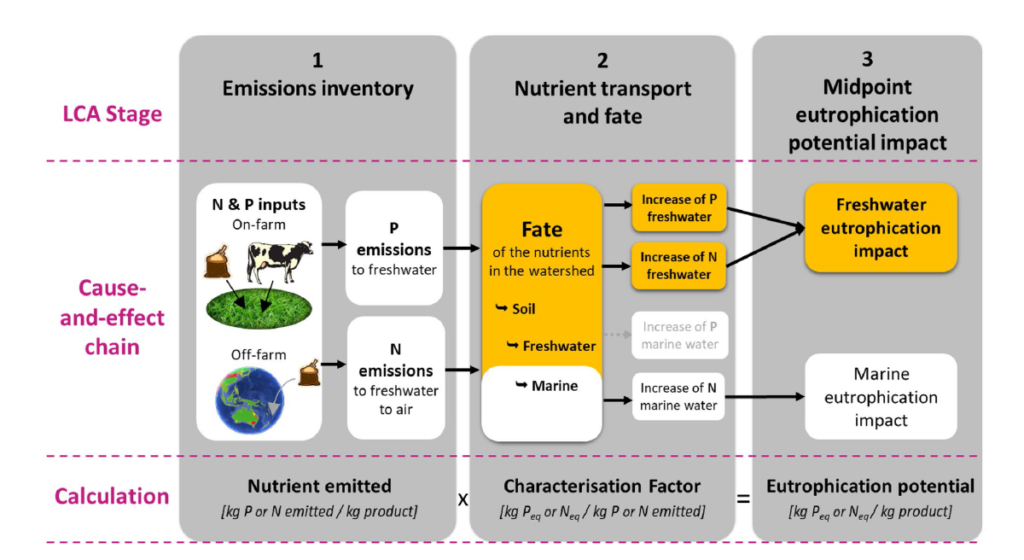Important impact assessment developments of 2021
The world in 2021 was still in the grips of the pandemic, which does not seem to be ending any time soon. Still, sustainability has continued to be an important news topic. And far from the cameras, LCA specialists and researchers are continuing to do their important methodological work in life cycle impact assessment (LCIA). This year, we review developments in marine impacts, habitat loss, soil depletion, human toxicity, freshwater eutrophication and a Thailand-specific LCIA method. This article was written by Laura Golsteijn with contributions from Peter Fantke, Shabbir H. Gheewala, Trakarn Prapaspongsa, Ricardo Teixeira, and Francesca Verones.
Marine impacts
Last year, we gave you a heads-up about the MARILCA working group. This collaboration between the Life Cycle Initiative and FSLCI began in late 2018 with the goal is to foster the development of marine impact assessment in LCIA, starting with plastic litter. In 2021, the group presented a framework for the assessment of marine litter impacts.
The framework includes an overview of life cycle inventory requirements (leakage to air, soil, freshwater or marine) and a detailed description of possible marine litter impact pathways, modeling approaches and data requirements. The impact assessment can potentially cover six areas of protection: ecosystem quality, human health, socio-economic assets, ecosystem services, natural heritage and cultural heritage. It includes both existing impact categories (such as human toxicity and ecotoxicity) as well as proposed new ones (such as physical effect on biota). This new framework is a solid basis for coordinating harmonized research efforts.

Habitat loss effects from land use
So far, approaches to assess effects of land use on biodiversity usually only consider total area shares of different land use types across the world’s ecoregions, not how the land use changes are organized spatially. That means that we cannot take the effects of habitat fragmentation into account.
To address this issue, a group of researchers led by the Radboud University in the Netherlands have developed a method to include fragmentation effects when estimating the effects of habitat loss on species richness. Their species-habitat relationship takes habitat size and connectivity into account. Fragmentation effects were found to cause on average 9% of the loss of mammal species. Following up, they developed characterization factors for birds, mammals, reptiles and amphibians for cropland, forestry, pasture and urban land use.
Soil organic carbon depletion impacts from land use
Traditional LCIA characterization factors are mostly based on empirical data, filtered through statistical methods and applied to the UNEP/SETAC framework. In contrast, researchers from MARETEC in Portugal used process-based models and mathematical relationships. This way, they calculated highly specific characterization factors for thousands of regions and at individual crop level, based on soil organic carbon depletion.
Important to note is that the impact appears highly dependent on the agricultural sub-class, determined by crop choice and management practices. This casts doubt on the traditional highly aggregated characterization factors. For example, although transformation into cropland generally leads to the highest soil organic carbon depletion, it is possible to achieve soil organic carbon gains with specific crops.
Human toxicity
The GLAM human toxicity working group, chaired by Peter Fantke and Dingsheng Li, focuses on the advancement of human exposure and toxicity characterization in LCIA based on the scientific consensus model USEtox. For instance, they are working on estimating mouthing exposure to chemicals in children’s products as well as on identifying chemicals of concern in building materials.
Integrating consumer exposure to chemicals in products with population exposure to chemical life cycle emissions reveals that consumer exposure (so product use–related exposure) frequently dominates overall human exposure to toxic chemicals. Looking at the effect side, adapting a non-linear dose-response model to advance human toxicity characterization increases the robustness and representativeness of human toxicity effect factors.
Spatially explicit freshwater eutrophication
In different water bodies, different nutrients can be limiting factors for eutrophication after aquatic nutrient enrichment. For years, freshwater eutrophication indicators in LCA viewed phosphorus as the sole contributor to such impacts. However, there are numerous freshwater systems across the world where eutrophication in freshwater is actually co-limited by nitrogen and phosphoros or even solely nitrogen-limited.
Early this year, Payen et al. published a set of spatially explicit fate factors for both nitrogen and phosphorus emissions. The environmental fate of dissolved inorganic nitrogen forms and dissolved inorganic phosphorus is essential to understanding the eutrophication impacts they may trigger in freshwater. The factors were calculated at a river basin resolution with a global coverage, and at the country and global scales by means of emission-weighting aggregation and distinguishing agricultural from non-agricultural emissions.
We intend to include the work from Payen et al. in the new SimaPro release in December 2021.

Thai Spatially Differentiated LCIA method
Last but not least, specifically for our Thai SimaPro users, a group of researchers has been working on the Thai Spatially Differentiated LCIA method (ThaiSD method) for the last couple of years. In 2021, the group published about Aquatic Eutrophication, Particulate Matter Formation and more. The work is expected to be completed in 2022.
If you are interested in reading more about any of these developments, follow the links or contact us. Are you a researcher working on something that might be relevant to share? We are always happy to hear about new developments, so do not hesitate to reach out.
Laura Golsteijn
Senior Consultant
I am eager to increase the environmental awareness of our society, and I believe that everyone can contribute to a more sustainable world, every day. At PRé we provide companies with both the knowledge and the tools to improve their products and services. I am excited to work for an organisation that is involved in developing sustainable initiatives.